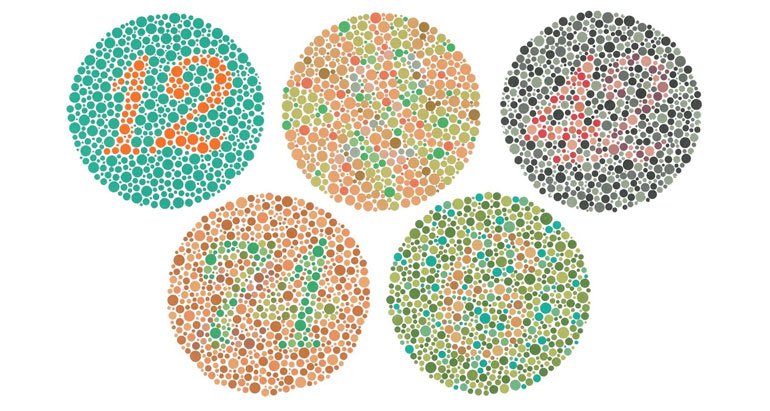
Visual Impairments That Affect Your Driving Ability: Temporary & Permanent
Updated Dec. 15, 2020People with less than 20/40 vision do not qualify for an unrestricted driver’s license in most states. However, there are vast numbers of people with poorer than 20/40 vision who can drive safely and legally under a restricted license, providing they wear corrective glasses or contact lenses. Only in extreme cases of vision impairment or blindness will a person be refused a driving license altogether. A visual field less than 20° in diameter or 20/200 (or less) vision in the better eye qualifies as “legally” blind.
As the vision requirements for driving are different in every state, people who are concerned about their eyesight should refer to their state driver’s handbook for state-specific information before putting in a license application.
Near-sightedness and decreased range of vision are not the only visual impairments that can affect a person’s driving ability. It is important to be aware of medical conditions and vision impairments that may render you unfit to drive so that you can keep tabs on your eye health and vision throughout your life.
Color blindness
People who suffer with color blindness have difficulty recognizing or distinguishing between colors. There are three types of color blindness, which are categorized as follows:
- The inability to distinguish between red and green.
- The inability to distinguish between yellow and blue.
- The inability to see any colors at all (besides gray, black and white), which is called achromatopsia.
Achromatopsia is extremely rare. Most people who suffer from color blindness have trouble telling the difference between red and green. This predominant type of color blindness could prove problematic when interpreting road signs and most notably, traffic lights. However, people who are color blind are usually fit to drive providing their vision is not adversely affected in some other way. In the case of traffic lights, they can compensate for their color blindness by focusing on the position of the light, rather than its color.
Most people who suffer from color blindness are born with the condition. Though, acquired color blindness can sometimes develop later in life. It often goes unnoticed but is surprisingly easy to test for! Take a moment to look at the image below.
If you can make out the number in the center of the image, it is unlikely that you suffer from any form of color blindness.

Macular degeneration
Macular degeneration is usually age-related and occurs predominantly in older adults. Over time, macular degeneration causes the portion of the retina which is responsible for sharp, central vision to wear away. Serious cases of macular degeneration can lead to blindness.
As you age, it is important to get regular vision and eye-health checks, notifying your doctor if you experience any vision challenges while driving or in day-to-day life. While macular degeneration cannot be “cured”, its development can often be slowed with appropriate treatment and lifestyle changes.
Cataracts
Cataracts are a clouding of the eye’s clear lens which can occur on one or both eyes. Cataracts affect vision as they interfere with the passage of light into the eye. The eye’s lens is usually clear and serves to focus the images we see onto the retina at the back of the eye. When a cataract forms this process is disrupted and the sufferer’s vision will become blurry or dark.
Cataracts generally occur as a result of natural aging or tissue damage to the eye. The early symptoms of cataracts can be improved with eyeglasses, magnifying lenses, anti-glare lenses and various other vision aids. As cataracts worsen, the sufferer will need surgery to remove the cloudy lens and fit an artificial one, if they wish to retain their vision and continue driving.
Diabetic retinopathy
Diabetic retinopathy is a complication that can occur in people with type-1 or type-2 diabetes. This condition develops when persistently high blood sugar levels cause weakening or blockage of the tiny blood vessels which supply the eye’s retina. If left unchecked, diabetic retinopathy can cause blindness. In fact, it is the leading cause of blindness among working-age adults.
Any driver who suffers from type-1 or type-2 diabetes must attend regular eye health checks to monitor their vision and screen for the onset of diabetic retinopathy.
Glaucoma
Glaucoma is a disease associated with increased pressure to the eye, which can damage the optic nerve. The optic nerve sends visual information from the retina to the brain. Damage to the optic nerve can cause temporary or permanent vision loss – bad news for drivers! Glaucoma sufferers generally lose their peripheral vision first, though central vision will eventually be affected. Even minor peripheral vision loss can be dangerous for drivers, as they may not be able to see vehicles approaching from the side or road signs which sit outside their immediate line of sight.
Glaucoma is usually hereditary and does not often develop until later life. Adults aged 40 or over who have a family history of glaucoma, or who are experiencing problems with their peripheral vision, should be screened for the disease. When caught early enough, glaucoma can be treated and need not affect your driving ability.
Night vision
People who suffer from any form of vision impairment – temporary or otherwise – will have greater difficulty driving at night. Nighttime driving is riskier for all drivers, due to low light, headlight glare and various other danger-enhancing factors. If your vision is impaired, you will have even more trouble distinguishing objects on the roadway ahead, spotting hazards and coping with glare from headlights and street lamps.
Some people suffer from poor night vision despite not having any other vision impairments. To drive safely in the dark, you must have adequate vision and be able to distinguish low-contrast objects, for instance, a pedestrian in a dark-colored sweater crossing the street. If this is a problem for you, be realistic with yourself and do not drive at night.
Glare resistance and recovery
Your vision can be impaired by exposure to extremely bright light – otherwise known as glare. The effects of glare are usually temporary, though they can be significant. As bright light can damage the retina, the human eye has a self-protective mechanism that automatically shuts out excess light by narrowing the pupils; glare resistance is the speed and efficiency with which this occurs when exposed to bright light. When light returns to a safe level, your eyes will no longer be receiving enough light therefore the pupils will widen to their normal size. The speed at which this occurs is called glare recovery.
During the time your eyes are either resisting or recovering from glare, your vision will be affected. This may only last for a few moments, but a lot can happen on the roadway during that time. For this reason, drivers must take whatever steps necessary to avoid glare.
You may experience glare as a result of another vehicle’s high-beam headlights at night, or from the sun during the day. Always dip your headlights when approaching another vehicle in the dark, as your glare could prevent them from seeing hazards, or the curve of the road. Older drivers and drivers with vision impairments are even more sensitive to the effects of glare, as their resistance and recovery mechanisms become less efficient.
To minimize the chances of glare impairing your vision while driving:
- Keep your windshield, windows and mirrors clean. Glare is worsened by dirt, dust and grime.
- During the day, use your vehicle’s sun visors.
- Keep sunglasses in your car and wear them during particularly sunny weather, at sunrise and sunset.
- Alter the angle of your rear-view mirror to minimize glare.
- Do not look directly at the headlights of oncoming vehicles.
Improving your view of the road
Besides keeping on top of your vision and eye health, here are some tactics you can employ to help you see the road better:
- 1

Keep your windows clean and free from view-disrupting objects like stickers and novelty car decorations.
- 2

Avoid putting objects on your dashboard which may be reflected in the windshield.
- 3

Do not wear tinted glasses when driving at night.
- 4

Make sure your windshield wipers are well-maintained and topped up with wiper fluid.
- 5

Be wary of tinting your car’s windows. This will restrict your view of the road and is illegal in many states (check your driving handbook for details).
Temporary vision impairments
Drivers with good eyesight and healthy eyes can still experience vision impairments that may impede driving ability. Vision can be adversely affected on a temporary basis, for instance, as a result of:
- Fatigue or tiredness
- Smoking
- Drug or alcohol intoxication
- Minor illnesses like allergies or colds
You have a responsibility to ensure you are always safe to drive. Never operate a vehicle if your vision is impaired.
Recognizing vision impairments
Remember that your vision may change throughout your lifetime. Having no vision impairments now does not mean that will always be the case. If you notice any changes in your vision, get yourself checked out by an optician immediately. When selecting new eyeglasses, always consider the size of the frames and be sure not to choose a design that may block your peripheral vision.
As a driver, you must recognize visual impairments and take whatever steps necessary to compensate for them. If you have a restricted driver’s license which requires you to use corrective eyewear, you must do this every time you get behind the wheel – without exception! Failure to do so would increase your chances of being involved in a collision and would mean you are breaking the law.




